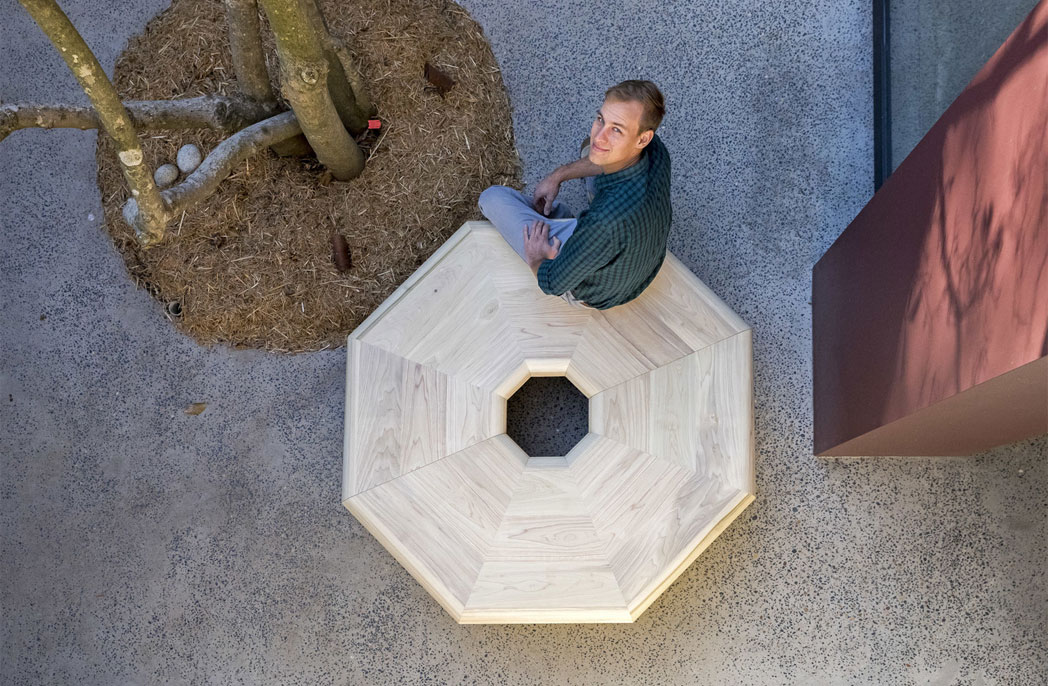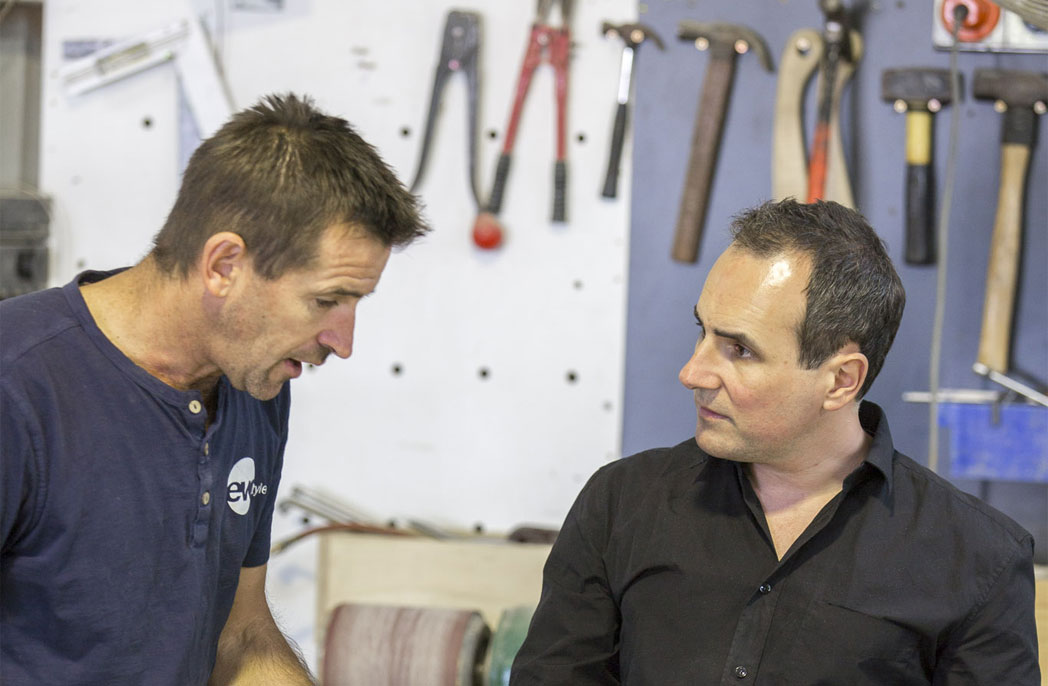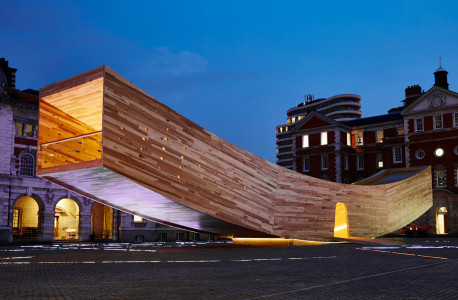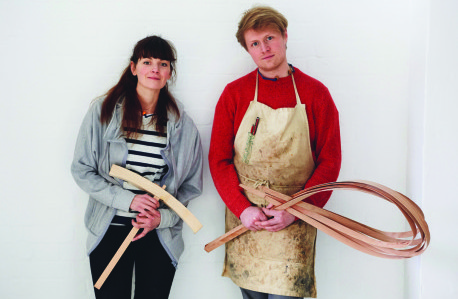
Low-grade to A-grade: EMBT’s timber installation
Low-grade to A-grade: EMBT’s timber installation
Share
Sitting in stark contrast to the existing intricately carved marble columns of the Università degli Studi di Milano is the Too Good to Waste installation designed by Spanish architecture studio EMBT. The project is the result of a collaboration between EMBT, the American Hardwood Export Council (AHEC) and Benchmark for the Fuorisalone at this year’s Salone del Mobile.
ADR chats to Nazaret Busto, a lead architect who worked on the project alongside EMBT’s founder Benedetta Tagliabue.
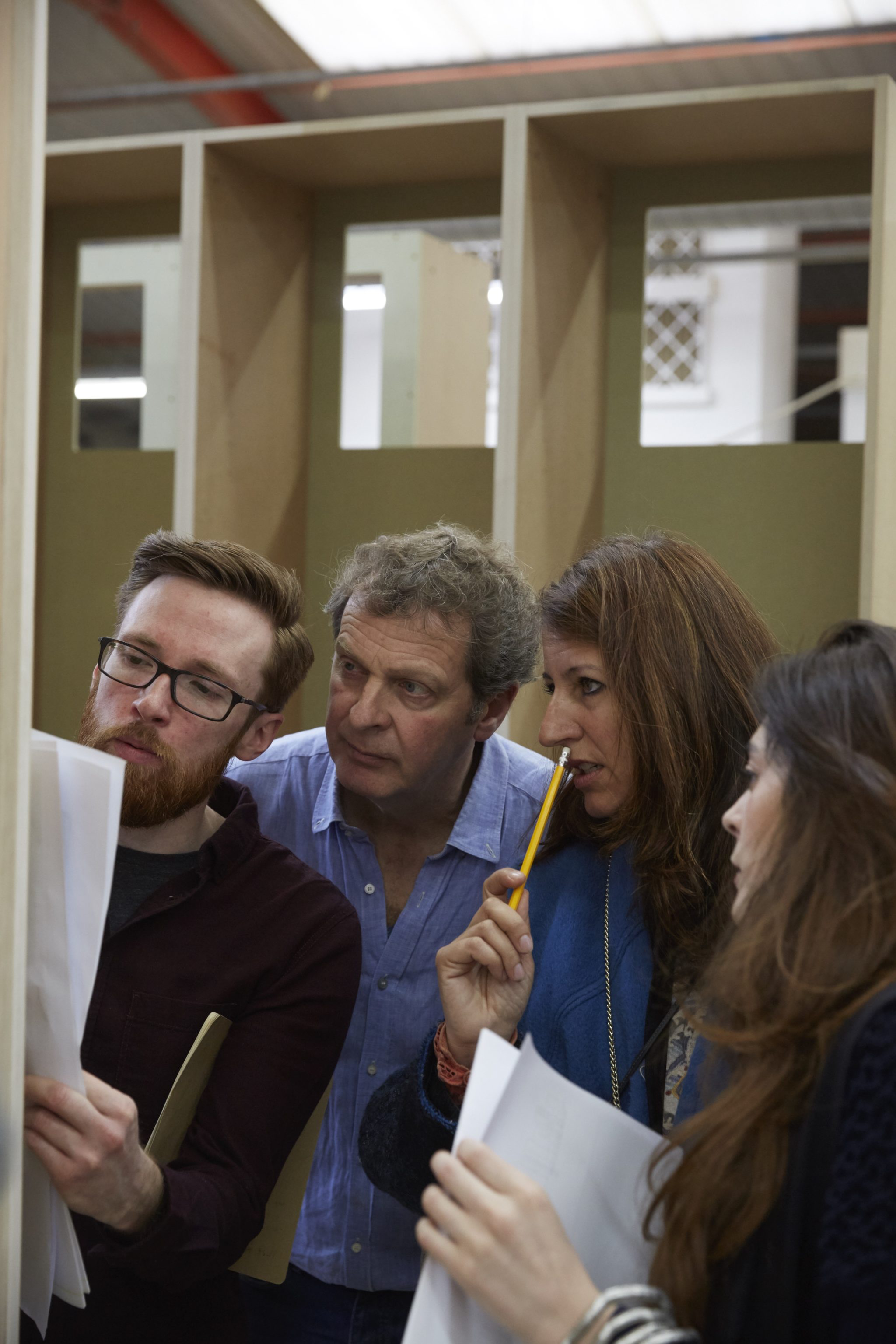
The project team resolving details in the workshop.
Can you tell us about the concept behind the design?
The installation is all about showing how a low-grade wood can be transformed into a beautiful piece of furniture. We worked with four types of timber species – tulipwood, red oak, maple and cherry – and used off-cuts and timber with imperfections in all different shapes and sizes. We really wanted to show how through good design and quality craftsmanship, rough, low-grade timber can be elegant and refined.
Our design highlights that it’s possible to work with different timber species, different sizes and timber that is not considered ‘A-grade’ and that you can still create something functional and beautiful. We’ve achieved that through a vertical stripe pattern that comes through in the design and detailing, which was only made possible by using individual timber pieces in a range of species.

The installation was designed to be interactive, with secret seats and benches that roll out.
How did the location play into the design?
We were inspired by the original façade of the university, which has decorative elements from the 15th century. The verticality of the stripes plays against the columns but in a different way. The human figures carved into the Heritage building façade feels like people inhabiting the building and our installation.
We also used the columns as a reference to create a kind of formal geometry. So the pieces fit around in a rounded way, creating these contemporary columns.
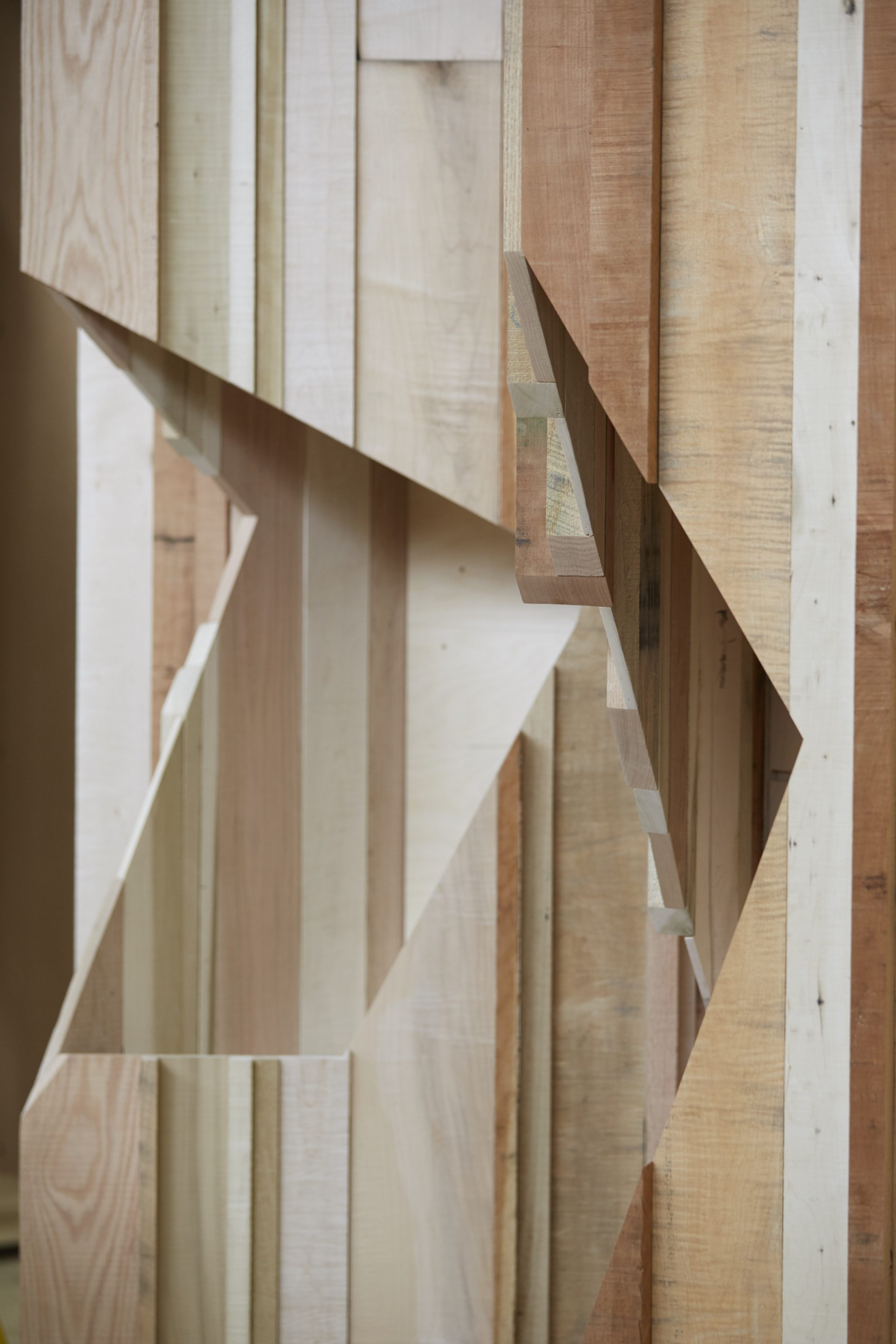
The design blends four different timber species to highlight qualities in each.
The installation is very tactile, why is that?
We wanted something that people can touch and can discover, so it’s not just a static thing. All of the furniture can be folded and hidden, creating little spaces to sit and relax as well as play. Part of that process is encouraging people to touch the timber and feel how soft it has become.
We wanted it to be a joyful installation, something that people can interact with. Each of the components has a little story or purpose behind it, for example: one is about discovering yourself and your surrounds and it has faceted mirrors, while there is another element that has a circular bench that rolls out and has enough room for two people to talk.

Old and new collide.
It would have been challenging to document. How did you go about developing the design?
At EMBT we work with collage and models a lot. So we actually started by collaging all the elements from the façade and putting together the old and new in a more figurative way. From there we built paper and wooden models.
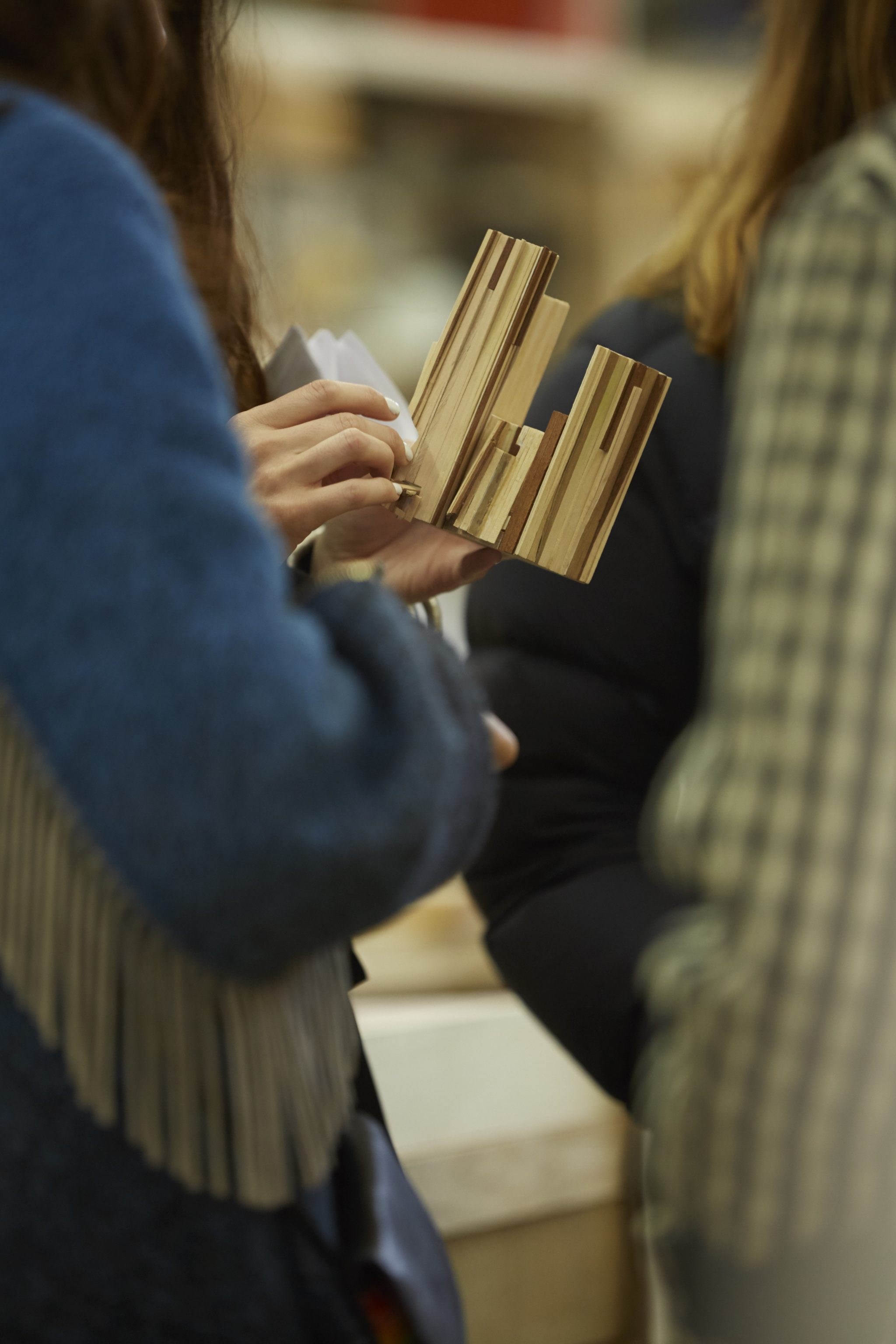
The design process involved various model-making and digital documentation before strong collaboration in the workshop with Benchmark.
How long did it take to put together and build?
A very short time actually. We started in January with the meetings, coming to the site and checking the location of the installation. And then we just started doing the design. After a month we were already in the workshop at Benchmark in England discussing how to construct all these collages of woods, and how to put it together. So all up, only about three months.
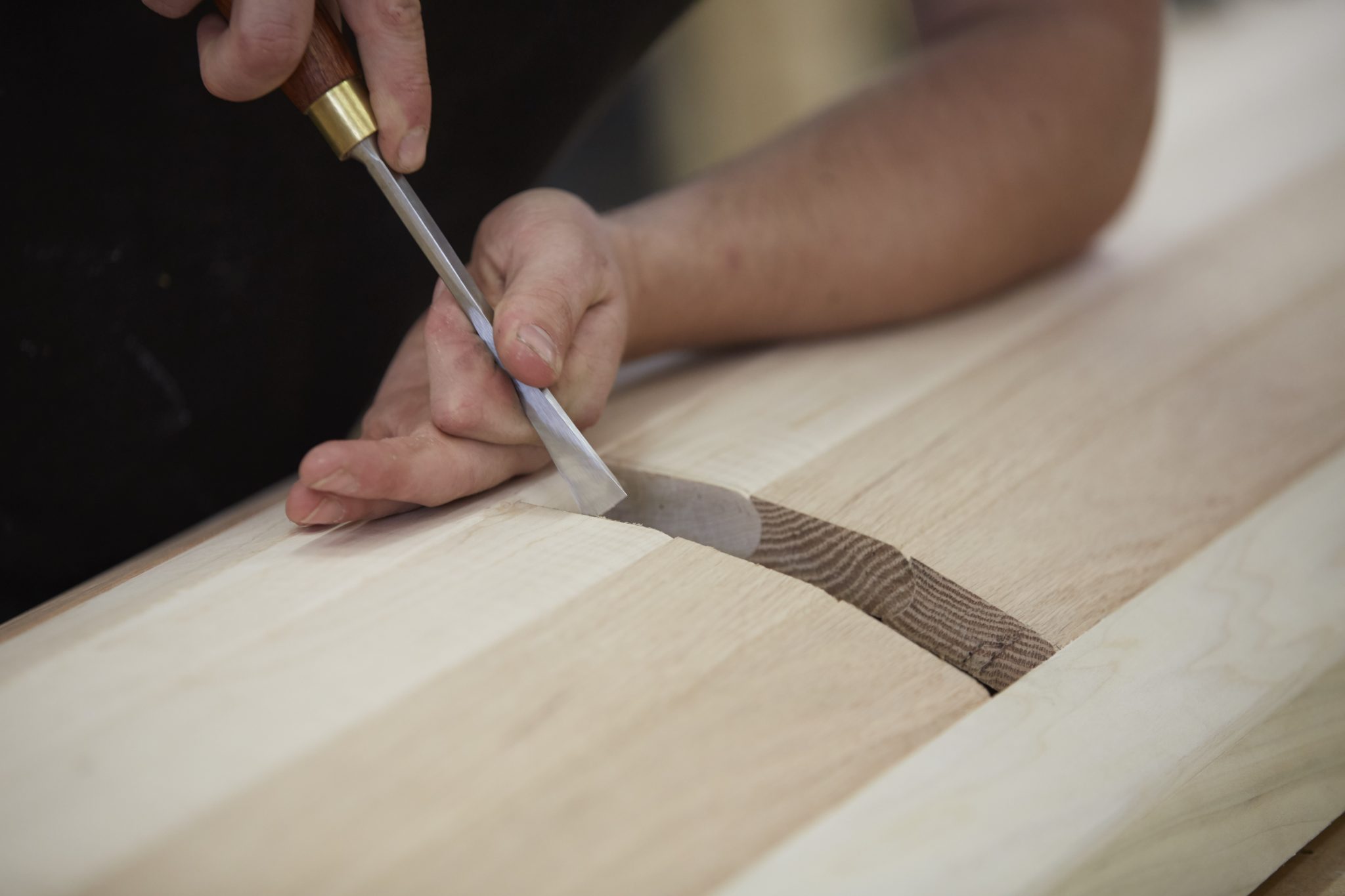
Curving elements in the design required handmade detailing.
What will happen at the end of the Salone?
We’re bringing to another festival in Spain, called High Festival. And after that will be looking for another location that it could fit.
ahec.org
mirallestagliabue.com
–
See another project that uses a range of timber species in an interesting way: Seed to Seat.
You Might also Like
